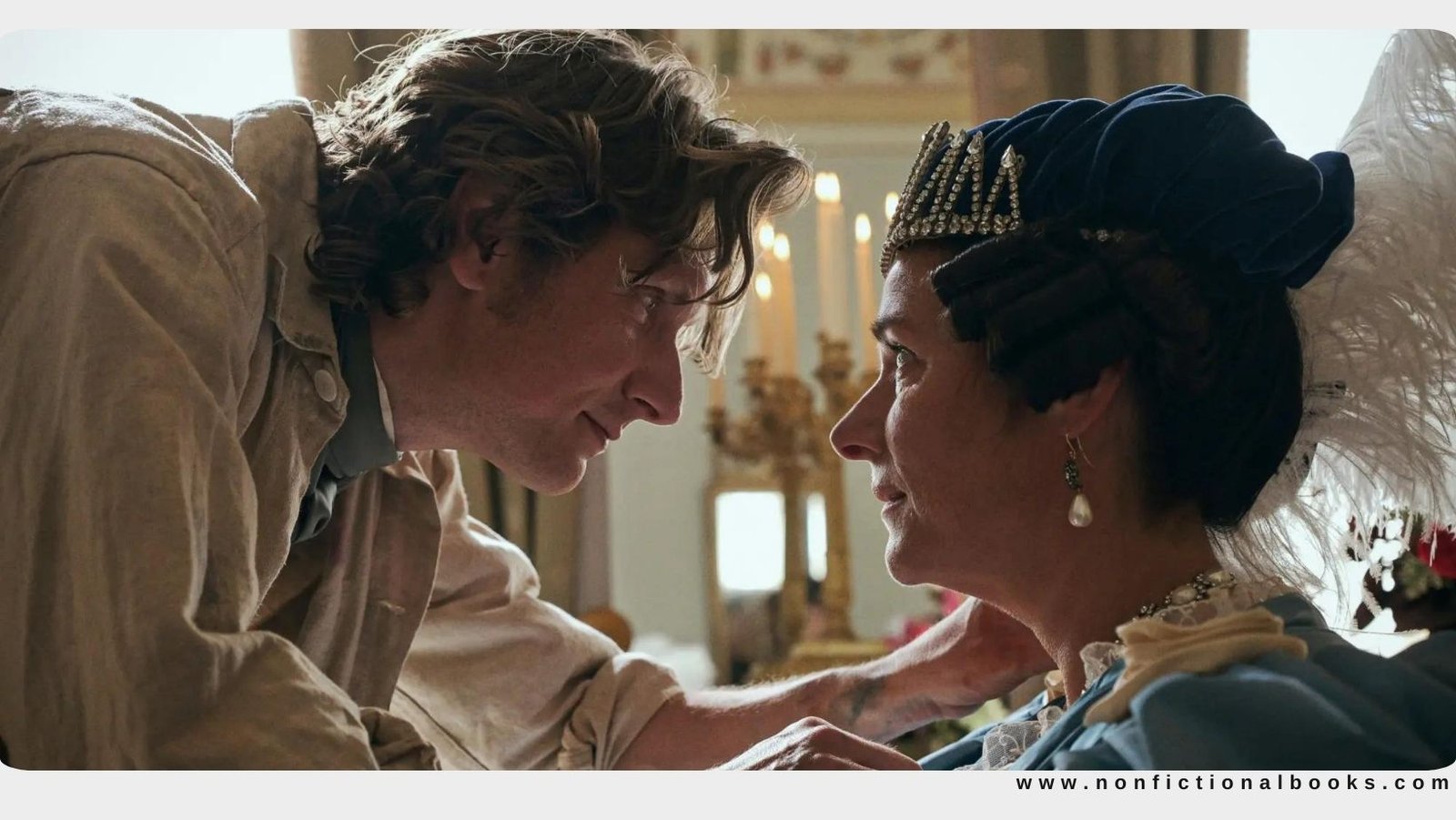Ever wondered how some people make good connections with everyone and fascinate every other individual with their charm and personality? The more you talk to them, the more they get interested. This is known as the art of seduction.
The Art of Seduction summary by Robert Green delves deeply into it and teaches you about the target and all the steps one should follow to make them fall for your personality. The book has identified many types of seducers, such as charmers, natural seducers, and many more, who use different techniques to seduce the target.
The Art of Seduction explores the mental and vital aspects of seduction, introducing it as a complicated dance of force and control. Greene contends that seduction isn’t just about actual fascination; it’s a psychological distraction in which the target’s longings and vulnerabilities are subtly exploited.
The book emphasizes the significance of mental control. Greene suggests that successful seducers figure out the force of the brain and use it for their potential benefit. This can include:
Creating Mystery: By keeping an environment of interest and keeping data, the seducer provokes the target’s interest and powers and their craving to “open” the secret.
Reflecting: Quietly copying the target’s manners, discourse examples, and even interests makes a feeling of connection and cultivates a sensation of being understood.
Playing with Insight: Seducers can control how they’re seen by assuming various parts or strategically highlighting desirable qualities.
The First Step
The art of seduction is a sensitive dance, and dominating the first step requires shedding the need for immediate pleasure. Instead of using formalities and gestures to pull off somebody, ignorance is your most important resource in this game. The fundamental guideline? Try not to be energetic.
Accepting your sentiments with some uncertainty can blow up fantastically, extending an aura of instability. The instability will work like a slope on which you will make your target move. All things considered, develop a quality of secret.
Allow your interactions or meetings to be playful and indirect, keeping your actual aims marginally hidden. This creates interest, and the target craves further discussion. They’ll consider what lies underneath the surface and what you’re not uncovering.
This subtle change in power elements creates the mirage that they’re the ones giving orders, the followers taking the principal action. By strategically holding back, you become more desirable. They’ll find themselves drawn in, wanting to know about the secret, ultimately leading them closer to you.
Think of it as a captivating novel. If the author tells about the entire plot at the beginning of the book, there’s no reason to keep reading. Seduction is based on a similar principle. By maintaining a touch of mystery, you create a narrative that unfolds slowly, leaving your target eager to discover the next chapter—a chapter that hopefully includes them.
So, take a deep breath, project confidence, and let the target make the next move. Remember, a little mystery goes a long way in the alluring art of seduction.
Prime Examples of Tempters
Greene distinguishes nine prime examples of tempters, each with their own particular methodology. The following are a couple of models:
The Siren
This is a stunning socialite personality who fascinates everybody. The person uses charming and excellent beauty-like weapons, naturally focused with sweet talk. They knowingly uncover barely enough to ignite interest, leaving the target longing to find more. Think Cleopatra or Marilyn Monroe—dazzling with mystique and charm.
The Charmer
Unlike the flashy siren, the charmer works invisibly. They centre around being close to making emotions and building trust with the target. They’re attentive people, causing the target to feel seen and understood. Shared encounters and compassion further glorify this bond. You can imagine them as your supportive friend who offers a listening ear and unwavering emotional support.
The natural
They are actually like their name. Effortlessly cool, mysterious, and strange, the Normal radiates a challenge that fuels the target’s desire. They seem inaccessible, creating a test that energises the target’s craving. Their casualness and lack of concern and interest make them more alluring. Think James Senior or Marlon Brando – fascinating with easy coolness.
The Duke’s Seduction of the Duchess: The Prime Example of the Art of Seduction
The Duke de Lauzun’s seduction of the Duchess de Montpensier fills in as a masterclass in the specialty of chilling out. Instead of using excellent signals and energetic statements; Lauzun’s system depended on tolerance and a hint of a determined lack of concern.
At first, the duchess, enamored by Lauzun’s standing as a famous charmer, thought of herself as very stricken. However, during the resulting experiences at court, Lauzun’s demeanor changed. Gone was the initial appeal, replaced by an air of casualness.
This startling ignited a shine of interest inside the duchess. How could such an attractive character, known for his heartfelt try-hard, not be keen on a lady of her height—lovely, rich, and certainly alluring?
Lauzun, the strategist, perceived the force of this shift. He didn’t pursue the duchess or praise her with any compliments. All things being equal, he developed a feeling of friendship, offering friendship and a listening ear. This unpretentious methodology demonstrated undeniably more power.
The duchess, fascinated by the obvious indifference, started to ask about Lauzun’s thought processes. Might a certifiable friendship at any point bloom into something else? The seed of uncertainty Lauzun had planted bloomed into a longing for a more profound connection. By keeping his actual sentiments, Lauzun put the ball solidly in the duchess’ court.
He didn’t have to admit his love; her interest and the charm of not being understood accomplished the work for him. Interested and maybe somewhat complimented by this startling new development, the duchess admitted her sentiments and, in an event, proposed marriage!
Lauzun’s determined persistence and behavior of lack of concern eventually got the duchess’ friendship (and a proposition to be engaged!), impeccably showing the rule illustrated before – in the round of seduction, in some cases, it’s ideal to allow the target to come to you.
Other elements
While Robert Greene’s “The Art of Seduction” offers strategies for charming someone, it goes beyond just “the game.” Here are some additional insights the book explores:
The Anti-Seducer: Authenticity Over Allure
The book presents the idea of the “anti-seducer.” These people avoid manipulative strategies related to enchantment. They focus on authentic connection and building connections based on genuineness and shared regard. They accept that fascination ought to emerge normally, not through determined moves or manipulative techniques.
Knowing Your Target: Decoding Motivations
The book dives into the psychology of likely targets. It breaks down various character types and their weaknesses. By understanding these, a “seducer” (however, Greene isn’t guaranteed to advocate for control) can tailor their methodology for improved results. For example, somebody looking for approval could answer well to praise, while somebody looking for experience may be attracted to a secretive persona.
The Takeaway: Beyond the Techniques
The art of seduction offers insights into human behaviour and the psychology of fascination. Understanding these ideas can be important for exploring social connections and building significant bonds. While the book provides techniques, it’s memorable that genuine connection flourishes with validity and common regard, not control.
Is There a Disadvantage?
The book’s emphasis on “seduction” as an essential game should be visible as manipulative. Authentic connections are based on trust and shared encounters, not determined strategies or manipulative techniques. Utilising these systems exclusively to influence someone might create superficial connections that lack depth.
Stages outlined in The Art of Seduction by Robert Greene
You have to go through some stages when pursuing any technique in the art of seduction. These stages are as follows:
Separation
The first phase starts with plotting your desire for your target. The book suggests initiating curiosity in the mind and pulling the strings. You can use various strategies to initiate strategies:
- You can start your conversation by creating an environment of mystery. Don’t reveal every aspect of your intentions. Let the target think about your intentions and make them feel compelled to consider what offer they are going to get.
- Make them introduce new experiences; this will produce excitement in their minds. This different perspective will widen their perspective.
- You can also use the gem of unavailability. This trick can heighten the appeal in the target’s mind. Being unavailable shows a careless nature, which will increase the desperation of the target. You can understand this by a simple example, like when you forbid a kid to do something he or she gets more curious about.
Create pleasure
Simply trap your target in the web of pleasure that you have designed. This is the core of actual emotional manipulation. Offer them something huge and create an emotional relationship with them. These strategies can help you build and offer pleasure to them:
- You can start by offering hints; don’t get too straight; this will create doubt in your mind. Consider giving them mixed signals, which will confuse the target. They will get desperate to determine the real reason behind all your intentions.
- The easiest way to create a fake emotional connection is to discuss hopes and dreams. A common dream will help you achieve your intention. Make them talk about their hopes; you can use their vulnerable time as your weapon.
- Give them emotional support and make them feel they are being listened to and matter to you. Don’t forget to end this phase on a happy note, give them hope, and paint a future filled with excitement and possibility.
- You can also use up-and-down cycle techniques to completely confuse your target. When you show affection towards your target, it triggers positive emotions like happiness, security, and validation. They feel seen, valued, and drawn closer to you.
- Suddenly, pulling back affection creates a confusing and negative shift. Your target might feel rejected, confused, or even insecure. This emotional rollercoaster can be disorienting. Humans love the feeling of stability and predictability, but when the opposite situation arrives, they get restless.
Deepening of feelings
Here comes the most intense and crucial phase of the whole procedure. Either you will get your intentions complete, or you will lose control over your target. You have to heighten feelings eventually considering all the factors. This can be achieved by following these strategies:
- You can simply design situations that evoke the feelings of your target. No matter which feeling you are exaggerating, make it stronger. The greater the intensity, the stronger the bond will be between you and the target. Then, you can be open about your intentions.
- Moreover, you can engage your target more by playing with forbidden topics. This will invite a feeling of thrill in the target’s mind and heighten the emotions.
- Human behavior loves every new feeling and heightens pleasure. This situation is ideal for discussing your offer.
- You can also present your target with a test, challenge, or obstacle. Overcoming it together can solidify your connection and make your target feel dependent on you.
All these stages are plotted, which can create a fake relationship with anyone for a limited time. All these techniques are completely toxic and manipulative. You have to make sure you are balancing the situation with your calculative efforts.
Conclusion
The art of seduction summary demonstrates how to make people crave friendship and make connections. All these techniques can help an individual manipulate and connect with anyone. The ideas in the book Art of Seduction are based on human psychology. If you love to read psychology-based books or are inspired by Robert Greene, you can explore various other options, too. You can explore more human psychology-based books, which will be more fascinating. Moreover, you can explore our website https://nonfictionalbooks.com/ to know which book will be perfect for you to read.

